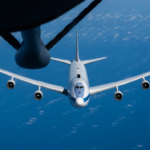Elon Musk’s SpaceX Starship exploded in a fiery blast late Wednesday night during a test at Massey’s Testing Center in Texas. It was Starship’s 10th test—and the fourth one in a row to end in flames.
According to SpaceX, the explosion happened around 11 PM CT. The spacecraft, known as Ship 36, encountered what the company called an “anomaly” and turned into a massive fireball. The livefeed of the test caught the explosion on camera, showing the test facility lighting up like daylight for a moment.
Thankfully, no one was hurt. SpaceX confirmed that a clear safety perimeter was maintained and all personnel are safe. In a statement, they added:
“Our Starbase team is actively working to secure the test site and surrounding area in coordination with local officials.”
However, the company warned that while there’s no ongoing danger to nearby communities, residents should stay away while the safety teams are at work.
ANOMALY! Just before Ship 36 was set to Static Fire, it blew up at SpaceX Masseys!
Live on X and YT:https://t.co/GPjZIX1Zyd pic.twitter.com/CfZhDeSGae
— NSF – NASASpaceflight.com (@NASASpaceflight) June 19, 2025
What Went Wrong?
The incident happened during a static fire test. This is a key step before any launch. The spacecraft’s engines are fired for a few seconds while the vehicle stays grounded. It helps engineers assess performance and detect issues before an actual flight.
In this case, the test went south roughly 30 minutes after the propellant loading began. There’s no official word yet on what triggered the explosion. But commentators on the livefeed mentioned the static fire was about to begin.
This marks the fourth straight Starship test explosion this year—adding to earlier failures in the seventh, eighth, and ninth tests. While these tests are part of development, the repeated failures are raising eyebrows.
The Bigger Picture
Elon Musk has been on a mission to bring down the cost per launch and ramp up the number of flights. Starship is supposed to be SpaceX’s flagship for deep space missions—including a future trip to Mars.
But right now, it seems stuck in a loop of fire and fury.
Despite these setbacks, SpaceX isn’t slowing down. In fact, rapid testing is part of Musk’s high-risk, high-speed strategy. Fail fast, fix faster—that’s the idea. Still, four explosions in a row isn’t a great look, even for a company known for pushing limits.
What’s Next?
SpaceX hasn’t revealed when the next test might happen. But if history is any sign, it won’t be long before another Starship rolls onto the test pad.
Until then, the engineering teams at Starbase have work to do. And so do the critics.
Also Read Showdown in Texas: Democratic Lawmakers Try to Block Tesla’s Robotaxi Rollout!




